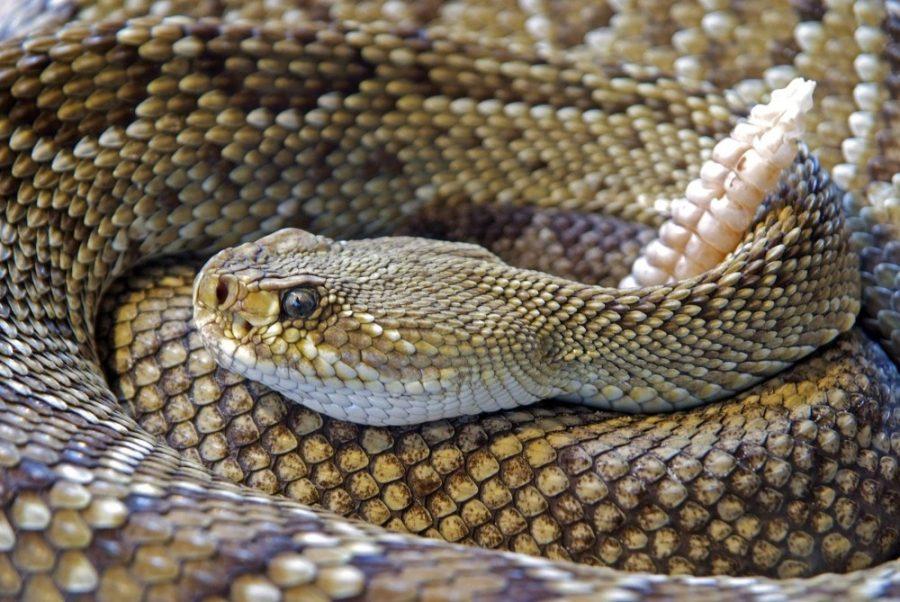Researchers from the University of Arizona College of Medicine are working on creating a fast-acting venom inhibitor for snakebite victims.
Dr. Vance Nielsen is vice chair of research for the Department of Anesthesiology at UA. He, along with collaborators from UA’s VIPER (Venom Immunochemistry, Pharmacology and Emergency Response) Institute, are researching what could best be described as a snakebite EpiPen that could help save lives and reduce the bodily damage that snake bites can cause.
Nielsen began this research working with a molecule called fibrinogen, which can modify the way blood clots. Clotting is a large concern in anesthesiology. According to Nielsen, he found that a mix of carbon monoxide and iron could modify fibrinogen in a way that would better allow for clotting to occur.
“I ran into Dr. Boyer, who runs the VIPER institute here … and it just popped into my head,” Nielsen said. “I said, ‘has anyone every tried to modify fibrinogen and see if it would be resistant to snake venom?’”
According to Nielsen, no one ever had. The next year of work consisted of research on how to modify fibrinogen in a way that would neutralize snake venom. A review of their preliminary research suggested that carbon monoxide might do the trick.
“They wanted to see whether or not carbon monoxide would bother any of the enzymes directly, my response was that would not be the case because very few things do,” Nielsen said. “And that’s when we made the discovery that as a matter of fact, it shuts them down pretty well.”
RELATED: University collaboration fights snake bites around world
In areas with colder climate, carbon monoxide poisoning is a very serious concern. Carbon monoxide is created when fuels such as gas, wood, oils and coal don’t burn completely. Without proper ventilation, people sometimes unknowingly breath in this harmful gas. The gas settles in the lungs, pushing out oxygen, and at worst causing suffocation. This occurs most often in old buildings with poorly-ventilated furnace systems.
https://www.nhs.uk/conditions/carbon-monoxide-poisoning/Pages/Introduction.aspx
The same properties that make carbon monoxide so deadly are also what make it a perfect substance to inhibit snake bites.
“Carbon monoxide is an incredibly fast-diffusing molecule — it can go through painted walls,” Nielsen said. “So if it can go through walls, it can certainly go through tissue and turn off any enzyme it hits.”
Speed is a crucial element to surviving a snakebite, said Nielsen.
“Basically, when it bites you deeper than just under the skin, it’s going to cause venom to be released into the tissue,” Nielsen said. “There will be immediate edema, pain, swelling and then little by little from that [site], venom is coming into your circulation.”
According to Nielsen, once the venom is in your circulation, it can begin to damage the kidneys, or the heart, or inhibit the function of your blood platelets, any of which can be fatal.

Nielsen recalled a story he read last week: A healthy triathlete in Colorado was hiking when he was bit by a venomous snake. When paramedics arrived 20 minutes later he was already in shock. By the time they got to the hospital he was dead.
“Not all snakebites are the same,” Nielsen said. “And if you’re lucky you have a few hours to get to the hospital, and if you’re unlucky they find you dead.“
While animal trials have produced promising results, the step towards human trials will be much more difficult.
“When it comes to a clinical trial, it becomes more dicey because you don’t ask volunteers to come up and get injected with venom,” Nielsen said.
According to Nielsen, what you can do is give these inhibitors to paramedics in an area where snake bites are prominent. After receiving consent from victims they will be injected and monitored to see how they respond compared to victims without the inhibitor.
“That’s the only way to approach this kind of thing ethically,” Nielsen said.
The patent and commercialization process is being overseen by Tech Launch Arizona, a UA organization that brings patents and products created at the UA to the market. However, given the restraints of the trial process it might take some time before we see the snakebite inhibitor for sale.
“If we can get the funding that we need and move forward, I’m hoping for something around five years [from now],” Nielsen said.
Follow Chandler Donald on Twitter









